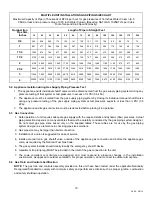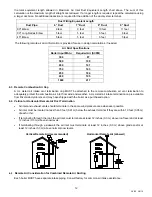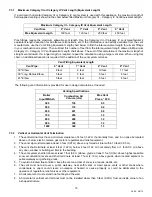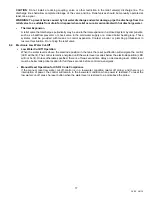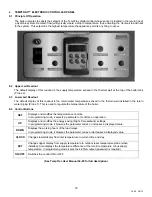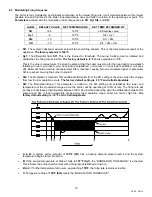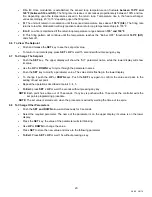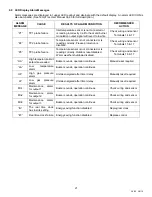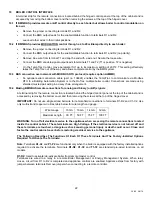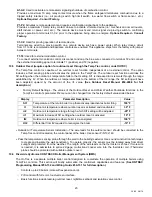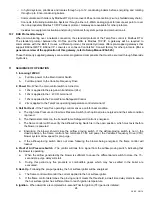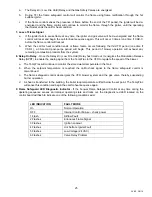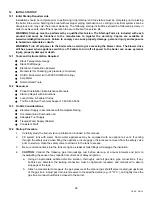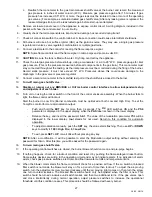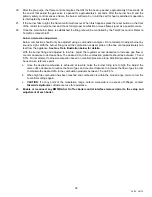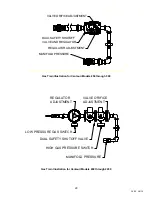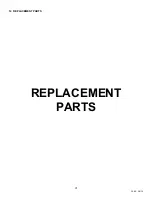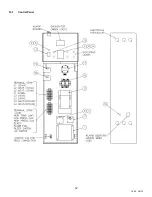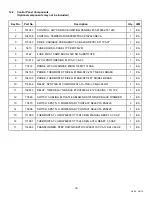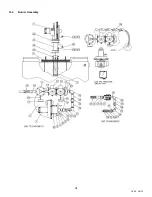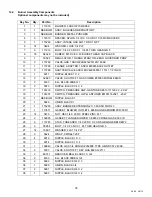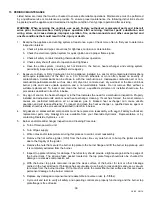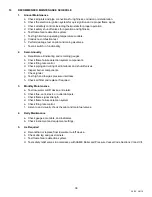
24
34-55 08/14
−
In hybrid systems, prioritizes and rotates through up to 12 condensing boilers before energizing and rotating
through up to 8 non-condensing boilers.
−
Communicates with boilers by Modbus RTU protocol over 485 serial connection (2-wire, shielded daisy chain).
−
Connects to Building Automation Systems through either a 4-20mA analog signal for remote set point or over
the non-proprietary Modbus TCP/IP network protocol. Gateways are available for other protocols.
−
Includes two equipment activation and proving terminals for system pumps and combustion air.
10.7 BAS Protocol Gateways
When communicating over a network connection, the standard protocol of the TempTrac control is Modbus RTU.
The standard protocol between the OnTrac and the BAS is Modbus TCP/IP. A gateway will be required to
communicate with the BAS if it uses a different protocol. Riverside Hydronics offers pre-mapped gateways that
support BACnet MSTP, BACnet IP, Lonworks or Johnson Controls N2. Consult factory for other protocols.
(For a
general overview of the application of this gateway, refer to Setup Manual #34-525.)
These third-party supplied gateways are custom-programmed components that must be sourced through Riverside
Hydronics.
11
SEQUENCE OF OPERATION
1. Incoming 120VAC
a.
Full time power to the Main Control Switch
b.
Full time power to the Variable Frequency Drive
2. Power On
-
When the main control switch is turned on:
a.
120v is applied to the step-down transformer (24v)
b.
120v is applied to the L.W.C.O. terminal L1
c.
120v is applied to the Fenwal Flame Safeguard Control
d.
24v is applied to the TempTrac operating temperature control terminal L1
3. Call For Heat -
If the TempTrac operating control senses a call-for-heat condition:
a. The High Gas Pressure and low Gas Pressure Switch (both optional) are energized and their safe condition
is proved.
b. The thermostat contact on the Fenwal Flame Safeguard Control is energized.
c. The flame control will then verify the Airflow-Proving Switch is in the open position, which must exist before
the blower is powered.
d. Energizing the blower should close the airflow proving switch. If the airflow-proving switch is not in the
closed position, the flame control’s fan terminals F1-F2 will power the Variable Frequency Drive (VFD)
blower system at low speed for pre-purge.
e. If the airflow-proving switch does not close following the blower being energized, the flame control will
lockout.
4. Proof of Air Pressure Switch
- The control will look for a signal from the airflow-proving switch, indicating that
the blower is operating:
a.
When the airflow generated by the blower is sufficient to cause the differential air switch to close, the 15 -
second pre-purge delay will start.
b.
During this period any flue products or combustible gases which may have settled in the boiler are
evacuated.
5. Heat-Up
- Following the pre-purge delay, the hot surface igniter will be energized:
a.
The flame control will monitor the current applied to the hot surface igniter.
b.
If the flame control determines the proving current meets the threshold, a dwell time delay starts to assure
the hot surface igniter has sufficient time to reach ignition temperature.
6. Ignition
- When dwell time is completed a 4-second Trial for Ignition (TFI) period is initiated:

